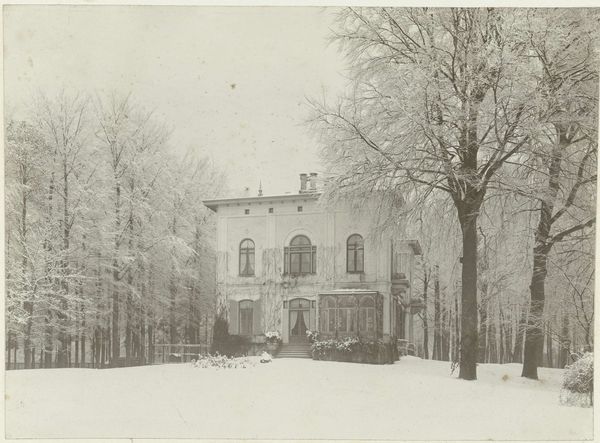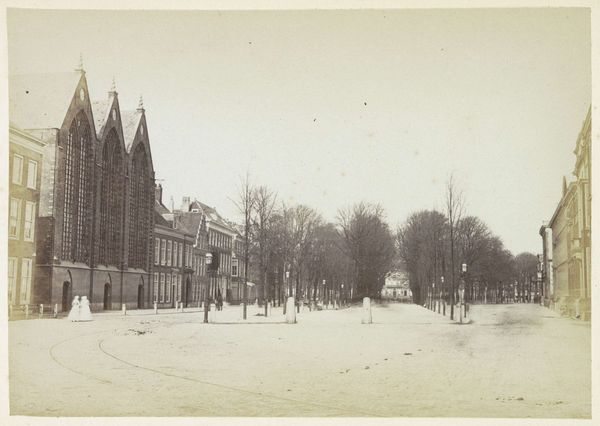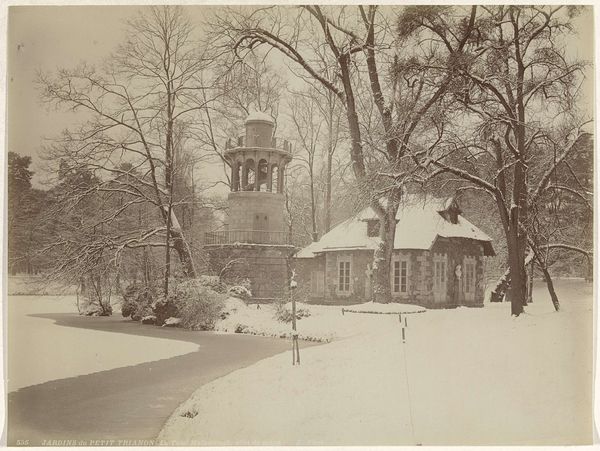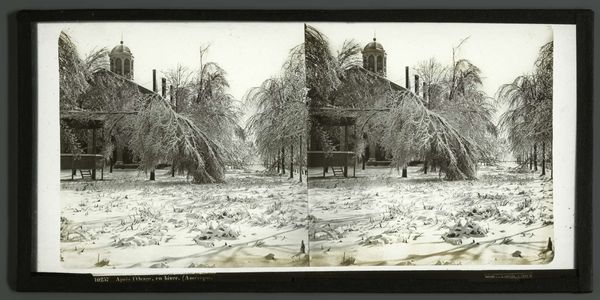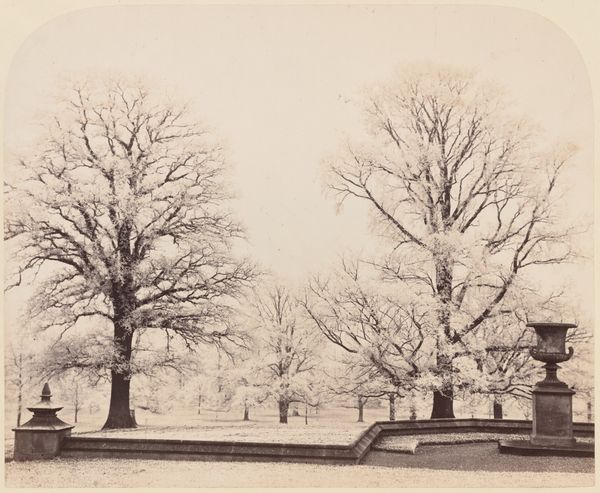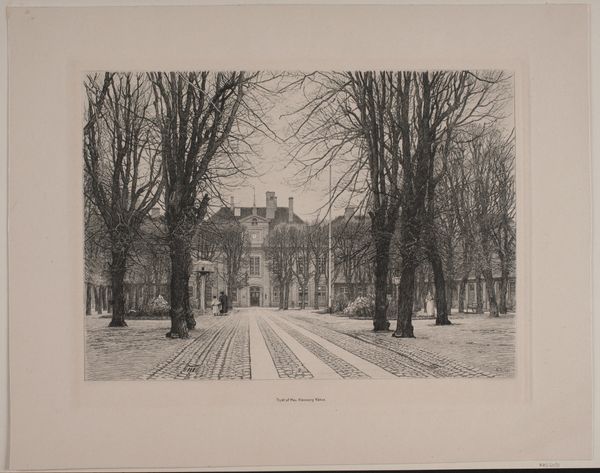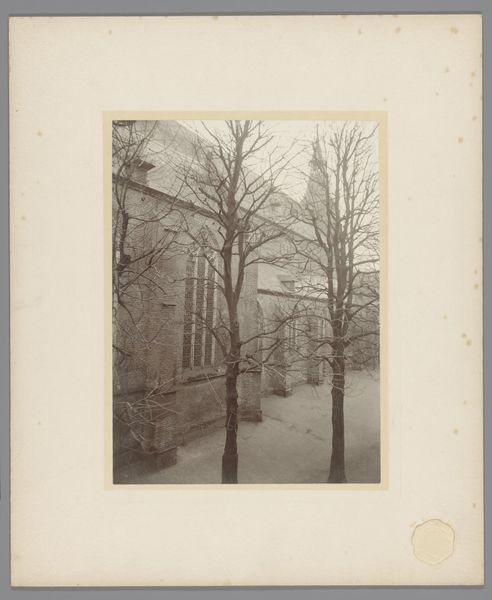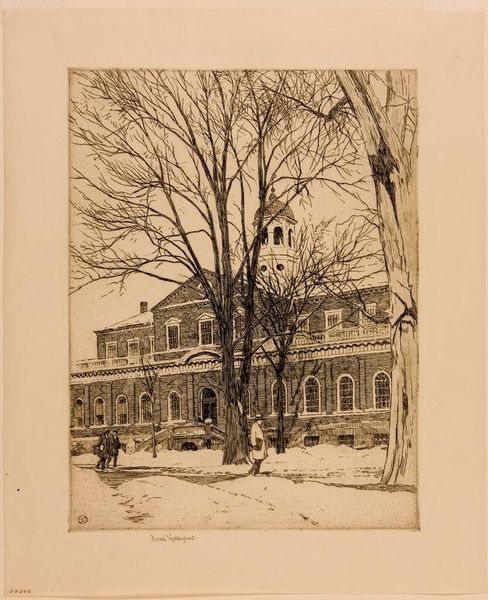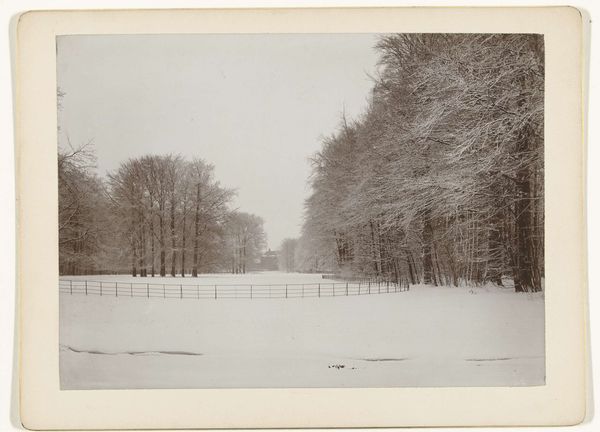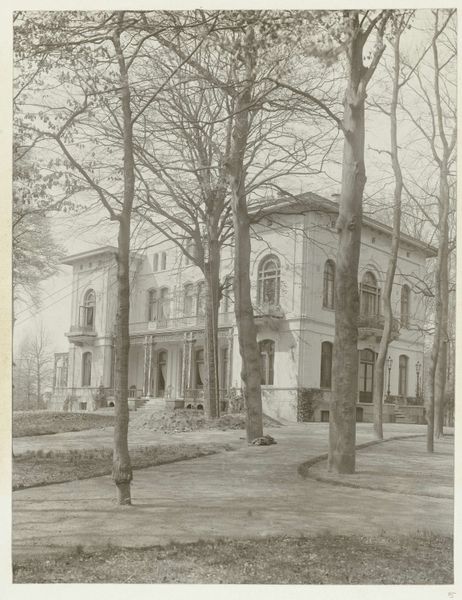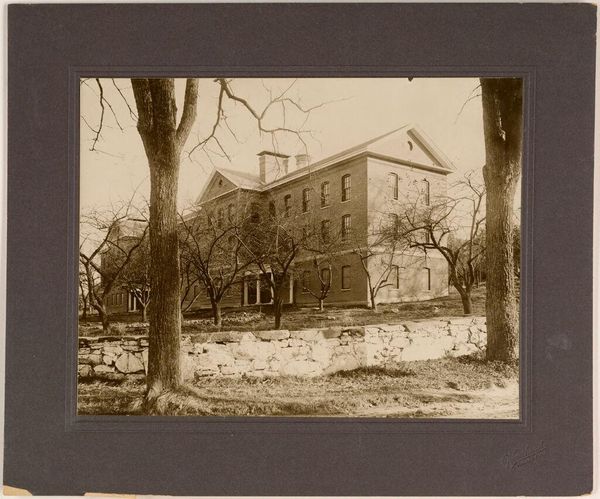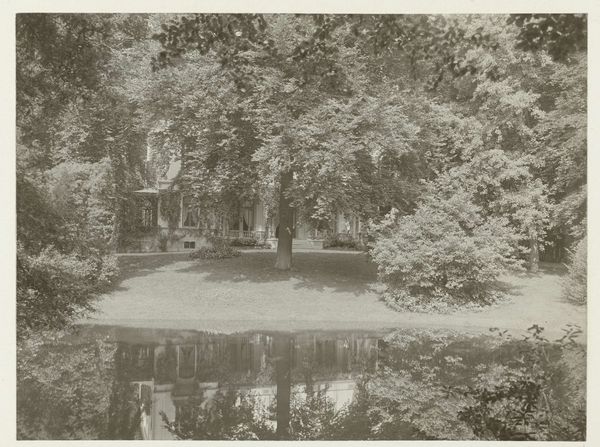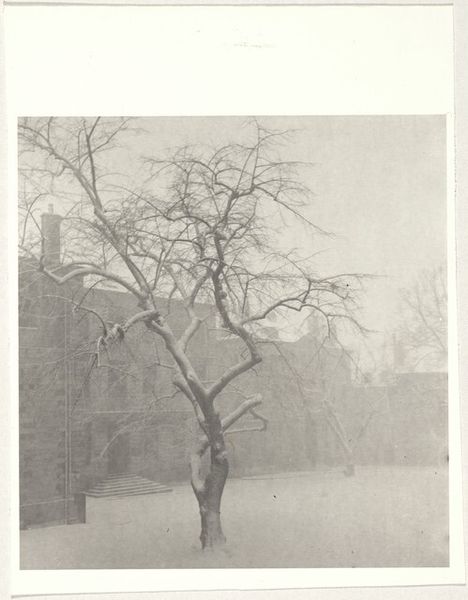
Geziicht op landhuis De Wildbaan, Driebergen, met sneeuw 1903 - 1907
0:00
0:00
henrypauwvanwieldrecht
Rijksmuseum
Dimensions: height 335 mm, width 520 mm, height 167 mm, width 221 mm
Copyright: Rijks Museum: Open Domain
Editor: This is a photograph titled "Geziicht op landhuis De Wildbaan, Driebergen, met sneeuw," which I believe translates to "View of the De Wildbaan country house, Driebergen, in the snow." It's by Henry Pauw van Wieldrecht, dating from 1903-1907, currently at the Rijksmuseum. It's quite beautiful, the snow really softens the architecture. What's your interpretation of it? Curator: The crucial aspect to observe is the process of its creation. We're seeing photographic print, likely manipulated during development or even in the darkroom. Consider the industrial processes involved, the mass production of photographic paper and chemicals that enabled someone like van Wieldrecht, an amateur, to make this image. The social context is key – who owned De Wildbaan? What was their relationship to the labor required to maintain that estate, especially in the cold winter? Editor: So you’re thinking less about the aesthetic quality of the snow, and more about the means by which the image was created and the societal structures it represents? Curator: Precisely. The seemingly innocent depiction of a snowy landscape hides a complex web of industrial production, social class, and labor. Think about the materials used – the silver halides in the photographic emulsion, sourced perhaps from colonial mines. And where would the photograph eventually reside? An album in an upper-class home, further reinforcing divisions between leisure and labour. How might an image like this justify those social conditions? Editor: That's fascinating. I hadn’t considered the wider material and social networks embedded within this seemingly simple landscape photograph. Thanks! Curator: And that reflection enriches our understanding of both the image, its impact, and photography's influence on class relations during that era.
Comments
No comments
Be the first to comment and join the conversation on the ultimate creative platform.
